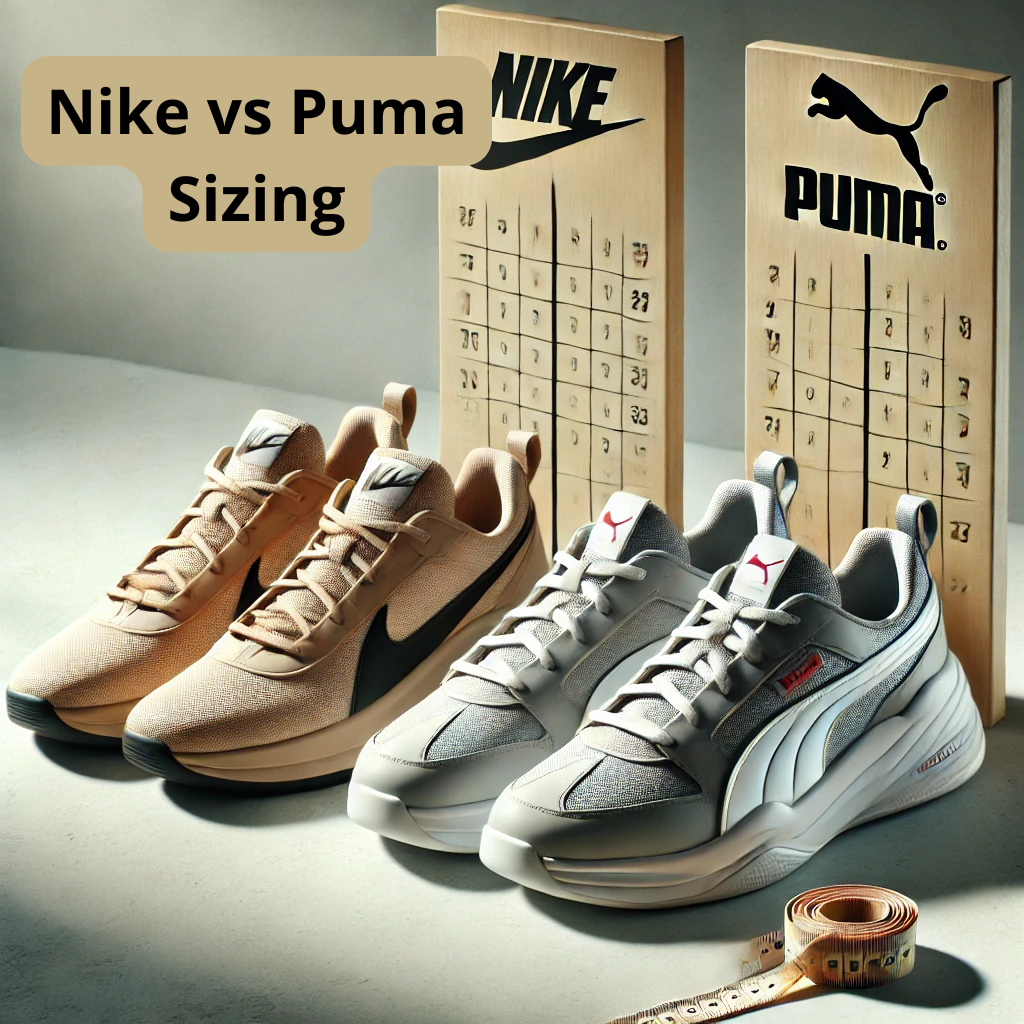Choosing the right size for your athletic footwear is crucial for comfort, performance, and injury prevention. Among the myriad of sportswear brands available, Nike and Puma stand out as two of the most popular and trusted names in the industry. However, when it comes to sizing, many consumers find themselves uncertain about which brand offers a better fit for their feet.
This comprehensive comparison delves into the Nike vs Puma sizing, exploring their sizing charts, fit descriptions, material impacts, and user tips to help you make an informed decision for your next pair of shoes.
Understanding Nike and Puma Sizing
Nike Sizing Overview
Nike follows a standardized sizing system that is generally consistent across its product lines. However, the fit can vary slightly depending on the shoe type and materials used. Nike is known for offering a snug, performance-oriented fit, which is ideal for athletes seeking maximum support and responsiveness.
Key Features:
- Most Nike shoes run true to size, but some models may feel narrower.
- Designed to offer a secure fit, reducing movement within the shoe.
- Use of breathable and flexible materials can affect the overall fit.
Puma Sizing Overview
Puma also adheres to a standardized sizing chart, but their shoes tend to offer a slightly more relaxed fit compared to Nike. This makes Puma a popular choice for those who prefer a bit more room and comfort in their footwear without compromising on style or functionality.
Key Features:
- Generally true to size, with some models offering a bit more width.
- Focuses on providing comfort, making them suitable for casual wear and training.
- Combines durable and flexible materials for a balanced fit.
Comparing Nike vs Puma Sizing Charts
To accurately compare Nike vs Puma sizing, it’s essential to look at their respective sizing charts. Below are general comparisons for men’s, women’s, and kids’ shoe sizes.
Men’s Shoe Size Comparison
| US Size | Nike (UK) | Puma (UK) |
|---|---|---|
| 6 | 5.5 | 6 |
| 7 | 6.5 | 7 |
| 8 | 7.5 | 8 |
| 9 | 8.5 | 9 |
| 10 | 9.5 | 10 |
| 11 | 10.5 | 11 |
| 12 | 11.5 | 12 |
Women’s Shoe Size Comparison
| US Size | Nike (UK) | Puma (UK) |
|---|---|---|
| 5 | 3 | 4 |
| 6 | 4 | 5 |
| 7 | 5 | 6 |
| 8 | 6 | 7 |
| 9 | 7 | 8 |
| 10 | 8 | 9 |
| 11 | 9 | 10 |
Click on the image below to find your next pair of sneakers!
Kids’ Shoe Size Comparison
| US Size | Nike (UK) | Puma (UK) |
|---|---|---|
| 1 | 0.5 | 1 |
| 2 | 1.5 | 2 |
| 3 | 2.5 | 3 |
| 4 | 3.5 | 4 |
| 5 | 4.5 | 5 |
| 6 | 5.5 | 6 |
| 7 | 6.5 | 7 |
Note: It’s always recommended to try on shoes or refer to specific brand sizing guides, as individual shoe models may have slight variations.
Fit Description: Nike vs Puma
Nike Fit Characteristics
Nike shoes are designed to offer a performance-driven fit, emphasizing a snug and secure feel. This is particularly evident in their running and basketball lines, where a tight fit helps in enhancing speed and agility.
Attributes:
- Ideal for athletes needing maximum support.
- Some models may feel tight for wider feet.
- Provides stability during high-intensity activities.
Puma Fit Characteristics
Puma shoes prioritize comfort and versatility, making them suitable for both athletic and casual use. Their fit is generally more relaxed, accommodating a broader range of foot shapes.
Attributes:
- Offers more room, making them comfortable for extended wear.
- Accommodates wider feet without feeling restrictive.
- Provides adequate arch support without being overly rigid.
Common Misconceptions About Nike and Puma Sizing
Misconception 1: All Nike Shoes Run Small
While some Nike models may run slightly small, especially those with stretchable materials like Flyknit, not all Nike shoes are small. It’s essential to refer to specific sizing guides and try on different models.
Misconception 2: Puma Always Runs True to Size
Although Puma generally offers a true-to-size fit, certain models or materials may feel narrower or wider. Always check the sizing chart and consider trying on shoes if possible.
Misconception 3: Bigger Shoes Mean More Comfort
A larger shoe size doesn’t necessarily equate to more comfort. Proper fit, considering both length and width, is crucial for comfort and performance.
Frequently Asked Questions (FAQ)
Do Nike and Puma offer wide sizes?
Both Nike and Puma offer select models in wide sizes. Check the product descriptions or consult with retailers to find wide-fitting options.
How important is sock choice when choosing shoe size?
Sock thickness can impact fit. Thicker socks may require sizing up, while thinner socks allow for a snugger fit. Always consider the socks you’ll wear with the shoes.
Do Nike and Puma shoes stretch over time?
Nike shoes with stretchable materials like Flyknit may conform to your feet over time. Puma shoes, depending on the material, may also offer some flexibility.
How can I accurately measure my foot for Nike and Puma sizing?
Use a ruler or measuring tape to measure the length and width of your foot in centimeters or inches. Compare these measurements to each brand’s sizing chart for accuracy.
Conclusion
Navigating the Nike vs Puma sizing landscape can be challenging, but understanding the nuances of each brand’s sizing systems is key to finding the perfect fit. While Nike tends to offer a snug, performance-oriented fit, Puma provides a more relaxed and comfortable sizing experience.
By considering factors like shoe type, material, personal foot shape, and specific brand sizing charts, you can make an informed decision that enhances both comfort and performance. Whether you’re an athlete seeking the best performance gear or a casual wearer prioritizing comfort, choosing the right size from Nike or Puma ensures you get the most out of your footwear.

